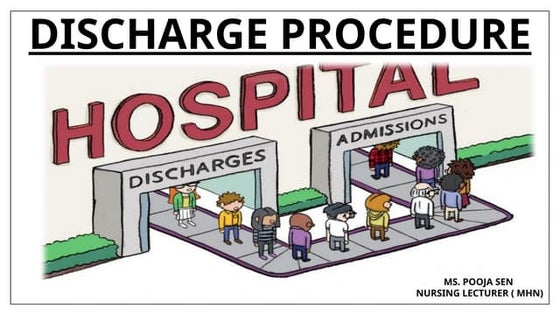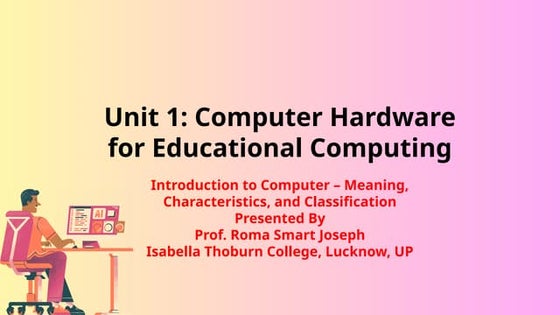Epilepsy.ppt
- 1. Epilepsy and Antiepileptic drugs
- 2. Epilepsy âĒ Seizure associated with the episodic high- frequency discharge of impulses by a group of neurons in the brain âĒ Starts as a local abnormal discharge may then spread to other areas of the brain âĒ Site of the primary discharge and extent of its spread determine symptoms that are produced
- 3. âĒThe particular symptoms produced depend on the function of the region of the brain that is affected âĒInvolvement of â motor cortex- convulsions â hypothalamus-peripheral autonomic discharge â reticular formation in the upper brain stem - loss of consciousnes
- 4. Types of epilepsy A. Generalized seizures ïž Generalized tonic-clonic (grand mal) seizures ïž Absence (petit mal) seizures ïž Atonic seizures ïž Clonic and myoclonic seizures ïž Infantile spasm (hypsarrhythmia)
- 5. B. Partial seizures ïžSimple partial seizures ïžComplex partial seizures ïž Partial seizures secondarily generalized Types of epilepsy
- 6. A.Generalized seizures(GS) âĒ Involves the whole brain âĒ Abnormal electrical activity throughout both hemispheres âĒ Immediate loss of consciousness
- 7. 1.Generalized tonic-clonic seizures(grand mal, major epilepsy) - GTCS âĒ Tonic phase (< 1 min) â Sudden loss of consciousness â Patient become rigid and falls to ground , respiration arrested âĒ Clonic phase (2mins) -Jerking of the body musculature âĒ Clonic phase followed by prolonged sleep and depression of all CNS functions âĒ defecation, micturition and salivation often occur Generalized seizures
- 8. âĒImmediately after the seizure the patient may â recover consciousness â drift in to sleep â have further convulsion (status epilepticus or serial seizure) âĒConvulsion with out recovery of consciousness (status epilepticus)- May lead to brain damage and death âĒFurther convulsion, after recovering consciousness (serial seizure) grand mal
- 9. 2. Absence (petit mal) seizuresâ minor epilepsy âĒ Prevalent in child and cease at the age of 20 âĒ Momentary loss of consciousness, patient freezes and stares in one direction âĒ Onset and termination of attacks are abrupt âĒ Patient abruptly ceases whatever he/she was doing âĒ Impairment of external awareness is so brief that patient is unaware of it âĒ Many seizures each day may occur as compared to GTCS Generalized seizures
- 10. 3. Atonic seizures (akinetic epilepsy) âĒ Unconsciousness with relaxation of all muscles due to excessive inhibitory discharges 4.Clonic and myoclonic seizures âĒ Shock like momentary movement, contraction of muscles of a limb or whole body 5.Infantile spasm ( hypsarrythmia) âĒ Intermittent muscle spasm and progressive mental deterioration âĒ Epileptic syndrome rather than a specific seizure type Generalized seizures
- 11. B. Partial seizure âĒ The discharge begins locally and often remains localized âĒ Symptoms depend on the brain region/regions involved ïž involuntary muscle contractions ïž abnormal sensory experiences ïž autonomic discharge ïž effects on mood and behaviour (psychomotor epilepsy) âĒ The EEG discharge in this type of epilepsy is normally confined to one hemisphere
- 12. 1.Simple partial seizures (cortical focal epilepsy) âĒ Lasts 0.5 â 1 min âĒ Convolutions are confined to a group of muscles or localized sensory disturbance depends on the area of cortex involved E.g. If motor cortex supplying to left thumb is affected then jerking of left thumb occurs âĒ With out loss of consciousness Partial seizure
- 13. 2. Complex partial seizures (temporal lobe epilepsy, psychomotor) âĒ Confused behaviors, purposeless movements, emotional changes âĒ Seizure focus is located in temporal lobe 3. Simple or complex partial seizures secondarily generalized âĒ Partial seizures occurs followed by GTCS with loss of consciousness Partial seizure
- 14. âĒ Possible causes of seizures ïž primary (idiopathic) â most of the cases ïžsecondary to trauma/ surgery on head, intracranial tumor, tuberculoma,cerebral ischemia, etc
- 15. Mechanism of action of antiepileptic drugs 1. Enhancement of GABA action ïž Barbiturates & BZDs ïž Vigabartrin and valproat (GABA transaminase inhibitor)-increase synaptic GABA conc. ïžGabapentin (increase GABA release from presynaptic neuron) ïž Tiagabine (inhibit GABA reuptake to presynapticneuron) All these facilitate GABA mediated Cl- channel opening and end up with inhibitory effect
- 16. 2. Inhibition of Na+ channel function ïžDrugs: Phenytoin, Carbamazepine, Valproic acid, Lamotrigine, Topiramate, Zonisamid prolong Na+channel inactivation state 3. Inhibition of Ca 2+ channel function ïžDrugs: Ethosuximide, Trimethadione, Valproate Inhibit T-type Ca2+ current Mechanism of action of antiepileptic drugs
- 17. Phenytoin (diphenylhydantoin) âĒOldest nonsedative antiseizure drug âĒUsed against partial seizures and generalized tonic-clonic seizures Mechanism of action âĒProlonging inactive state of voltage sensitive Na+ channel------ use-dependent effect âĒInhibition of high frequency discharge with little effect on low frequency discharges âĒAt high/ toxic conc: reduce ca 2+ influx, inhibition of glutamate and facilitate GABA responses Individual drugs
- 18. Adverse effects ïķAt therapeutic concentration â Gum hypertrophy/ gingival hyperplasia (20%) â Hirsutism, coarsening of facial feature, acne â Megaloblastic anemia(decrease absorption and increased excretion of folate) â Abnoramal Vit D, Vit K and Ca+ metabolism (Osteomalecia, Hemorrhage) â Hyperglycemia / inhibit insulin release â Fetal hydantoin syndrome (hypoplastic phalanges, cleft palate, microcephally ) Phenytoin
- 19. ïķAt high plasma level âĒ Dose related toxicity -Ataxia, vertigo,diplopia, nystagmus -drowsiness, behavioral alterations ,mental confusion , hallucination -Epigastria pain, nausea and vomiting Phenytoin adverse effects
- 20. Drug interaction â Drug interactions related to plasma protein binding or drug metabolism â 90% plasma proteins binding âĒ Hypoalbuminemia and drugs which displace phenytoin from plasma proteins alter total plasma conc. of the drug â Phenytoin induce microsomal enzymes âĒ Enhance metabolism of drugs which get metabolized by microsomal enzyme Phenytoin
- 21. Fosphenytion âĒ Water soluble prodrug of phenytoin âĒ Introduced to over come difficulties in i.v. administration of phenytoin in status epilepticus
- 22. Phenobarbitone âĒ Effective against GTC,SP and CP seizures âĒ Can be used for status epilepticus but with slow onset of action âĒ Ineffective in absence seizure âĒ less commonly used than phenytoin, carbamazepam,or valproate âĒ Similar clinical use as phenytoin âĒ Phenytoin is preferred because of the absence of sedation
- 23. Mechanism of action âĒ Exact mechanism of action is unknown â Probably through enhancement of inhibitory processes and diminution of excitatory transmission âĒ Binds to allosteric regulatory site of GABAA receptor ( inhibitory effect) â Enhances the GABA receptor-mediated current by prolonging the openings of the Cl- channels âĒ Inhibiting excitatory responses by glutamate Phenobarbitone
- 24. Adverse effects âĒ Sedation âĒ Tolerance and dependence with prolonged use âĒ Hypersensitivity âĒ Nystagmus and ataxia occur at excessive dosage âĒ Agitation and confusion in the elderly âĒ Irritability and hyperactivity in children Phenobarbitone
- 25. Drug interaction âĒ Additive effect with CNS depressants âĒ Induce metabolism of many drugs (warferin,oral contraceptives,chloramphinicol,theophyline,griseof ulvin) âĒPhenobarbitone competitively inhibits as well as induces phenytoin and impramine metabolism âĒIt decrease GIT absorption of griseofulvin âĒPlasma conc increased by sodium valproat Phenobarbitone
- 26. Carbamazepine âĒ Is tricyclic compound and closely related to TCA âĒ Pharmacological actions resemble phenytoin âĒ Exert lithium like therapeutic effect in mania and bipolar mood disorder âĒ Effective in most forms of epilepsy (except absence seizures) âĒ Particularly effective in psychomotor epilepsy (CPS)
- 27. Adverse effects âĒ Sedation, dizzines, vertigo, diplopia,and ataxia âĒ Vomiting, diarrhoea âĒ Worsening of seizure with higher dose âĒ Water retention and hyponatremia âĒ Foetal malformation reported âĒ Teratogenesity doubled if combined with valproate Carbamazepine
- 28. Drug interaction âĒ Enzyme inducer âĒ Its metabolism induced by phenobarbitone, phenytoin, valproate and vice vesa âĒ Erythromycine, fluoxetine and isoniazid inhibit carmamazepine metabolism Carbamazepine
- 29. Valproic acid (sodium valproate) âĒ Effective against GTCS, partial seizures as well as absence seizures âĒ Ethosuximide is the drug of choice when absence seizures alone occur âĒ Valproate is better in mixed absence seizures and GTCS âĒ Mixed absence seizures and GTCS is more common than pure absence seizures
- 30. Mechanism of action âĒPhenytoin like frequency dependent prolongation of Na+ channel inactivation âĒEffect on GABA metabolism (degradation & uptake inhibition, increase synthesis from glutamic acid) Adverse effects (low toxicity) âĒAnorexia, vomiting, hear burn, drowsiness, ataxia, tremor âĒSpinal bifid and other neural tube defects in the offspring( during pregnancy) valproate
- 31. Drug interaction âĒ Inhibit phenobarbitone metabolism âĒ Displaces phenytoin plasma protein binding and decrease metabolism (phenytoin toxicity) âĒ Valproate and carbamazepine induce each otherâs metabolism âĒ Foetal abnormality if valproate and carbamazepine given together valproate
- 32. Ethosuximide âĒ Introduced as a "pure petit mal" drug âĒ Drug used to treat absence seizures and may exacerbate other forms âĒ Both ethosuximide and valproate are equally effective for absence seizure âĒ However, valpraote is more commonly used Mechanism of actions : blocking T-type calcium channels âĒ Relatively few unwanted effects mainly nausea and anorexia
- 33. Other drugs âĒ Topiramate & lamotrigine âĒ Felbamate, zonisamide & levatiracetum âĒ Vigabatrine,Gabapentine & Tiagabine âĒ Oxazolidinediones ( trimethadione, dimethadione & paramethadione) âĒ BZDs (diazepam & clonazepam)
- 34. Drug of choice forâĶâĶâĶ. 1.GTCS/ SP with or with out generalization 1st choice: carbamazepine, phenytoin 2nd choice : valproate, phenobarbitone 2. Complex partial with or with out generalization 1st choice : carbamazepine,valproate, phenytoin 2nd choice: gabapentin,lamotrigine 3. Absence seizure 1st choice: valproate , 2nd choice: ethosuximide,lamotrigine
- 35. 4. Status epilepticus 1st choice: diazepam(i.v.), lorazepam(i.v.) 2nd choice: fosphenytoin, phenobarbitone Alternative/add on drugs : general anesthetics


















































































